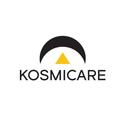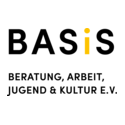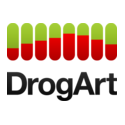In short
Increasing amounts of new psychoactive substances (NPS) have been identified in Europe. This type of drugs is chemically and toxicologically similar to classic illicit drugs but evades legislation by structural alterations. For example isotonitazene is a potent NPS opioid and first member of the benzimidazole class of compounds to be available online. There is however little information available regarding these substances, for example, the consumption and user patterns. At the moment the analysis is also difficult, because of the lack of reference material. Looking into manners to help dealing with challenges posed by NPS phenomena and identify new harm reduction opportunities is also an important goal of the project. The SCANNER-project sets up different deliverables to achieve these objectives.
Project description
The last decade, increasing amounts of new psychoactive substances (=NPS) have been identified in Europe. These NPS are chemically and toxicologically similar to classic illicit drugs but evade legislation by structural alterations. Little information is available regarding NPS consumption, user patterns or profiles. Additionally, laboratory analysis of NPS is difficult because reference material supply is poor or because chemical spectra are not readily available.
The most frequently used response to tackle the NPS-problem is a legislative change. However, little information is available regarding the influence of legislation on the identity and quality of NPS offered for sale online and purchase methods.
In the SCANNER-project, we
- Identify the NPS offered for sale using continuous web monitoring, both before and after a change in legislation. This yields valuable information on the effect of legislation on identity and price of NPS available online.
- Purchase and subsequently analyse NPS using analytical chemistry and establish to what extent the identity of NPS available online matches the presumed identity as advertised by the vendor.
- Develop and validate reference analysis methods, the NPS undergo proficiency testing. Costly analysis reference materials for NPS will be shared amongst the participants.
- Harmonise drug checking operating procedures throughout Europe and improve general analysis result quality.
- Share obtained NPS data with the EU EMCDDA REITOX network using the recently developed long-term online platform ‘European Database on New Drugs’. As the Reitox network are designated national institutions reporting on drugs and drug addiction and the EMCDDA provides a factual overview of European drug problems, this improves the NPS monitor system and usage of the research throughout the EU.
- Collect and analyse heroin samples and investigate the presence of fentanyl. The last years dozens of opioids have appeared on the NPS market, most being fentanyl derivatives. Some of these have high potencies and caused countless overdose deaths worldwide. The information obtained by this part of the project provides a picture of the potential fentanyl hotspots within Europe. Investigating the feasibility of cheap fentanyl test kits contributes to harm reduction, because of the potential to save lives.
- Support civil society organisations to collect prevalence data on NPS use, to exchange methods for epidemiologic research on NPS and to standardise ways of monitoring NPS use. This to ensure reliable data collection across Europe but also for meeting the challenges posed by the NPS phenomena in their interventions in general.
Results
During this project, an exhaustive review of drug checking services harmonises the harm reduction drug checking approach throughout Europe and improves general analysis quality. This results in guidelines and recommendations for governments wishing to introduce drug checking and ensures reproducibility across the different services in Europe.
SCANNER aims to provide data that efficiently links the identity of a substance with its characteristics, which dramatically reduces the time required to detect new substances and trends. This enables an even more proactive approach than is currently being used in, for example, helplines who provide telephone and online counselling. Data such as spectra and analytical best practice are eventually made available in a web portal accessible to the international Early Warning System (EWS) network and enables implementation of the project results in other EU member states.
We kindly invite you to contact us! Members of the press are asked to contact Sciensano’s media relations team.
Sciensano's project investigator(s):
Service(s) working on this project
Partners









